The Advantages of Vintage Lego Technic as a Gateway to Meccano
Written by Luka Kralj-Taylor for our Winter 2022 Newsletter
I would like to take this opportunity to make a shocking confession: I am a fan of Lego. Specifically, I am a fan of Lego Technic produced between 1977 and 1980. In fact, this is what led me to Meccano.
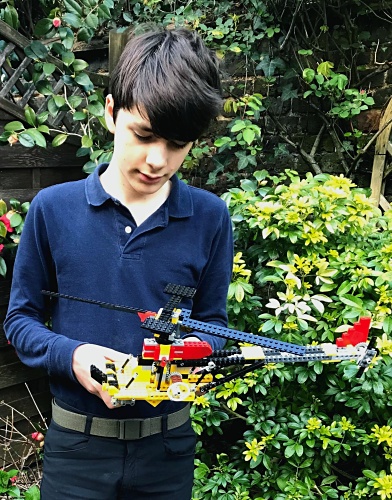
Figure 1 Luka with a Lego helicopter
In this article I will argue that Lego’s older Technic sets inhabit a different and simpler niche and can be used to introduce mechanical principles to children before they are ready for Meccano. However, Technic is widely used today and people don’t seem to progress to Meccano — one quick search on YouTube shows how people are happy to stay with Technic and aspire to make ever larger and more complicated models. There are of course many reasons for this, such as lack of publicity, the inferior flexibility and quality of modern Meccano, and the common belief that anything that is not Lego is somehow ‘copying’ it (the “That’s not Lego!” reaction, something we also suffer from). However, I will mainly focus on one reason, that modern Technic fills the same niche as Meccano (albeit not as well).
First though, a bit of history: Lego introduced the Expert Builder line in 1977 (reference 1), and one of the first models introduced was the Forklift Truck (figure 2; reference 2), with the Go Kart (figures 3 and 4; reference 3) released the following year. These are two good starting sets. This culminated in the Auto Chassis (figures 5 and 6; reference 4) of 1980, by which point the UK Meccano factory at Binns Road in Liverpool had closed own.
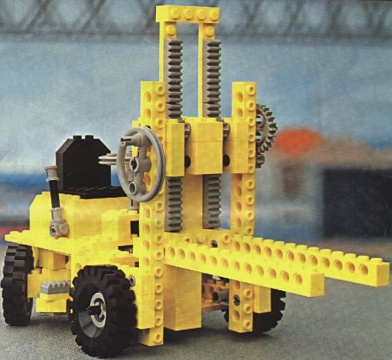
Figure 2 Fortlift Truck

Figure 3 Go Kart
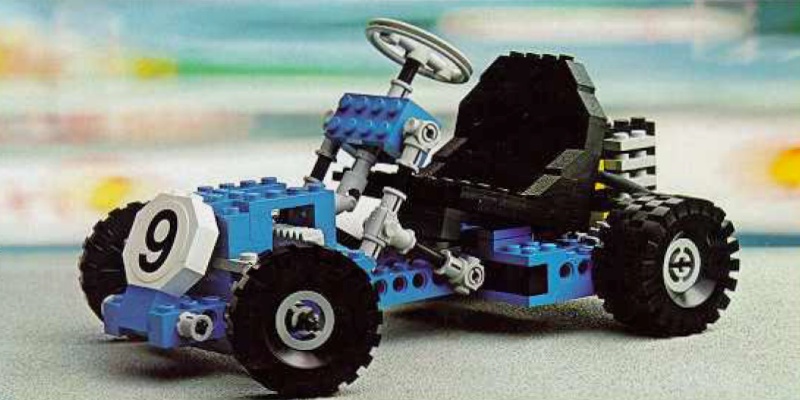
Figure 4 Go Kart
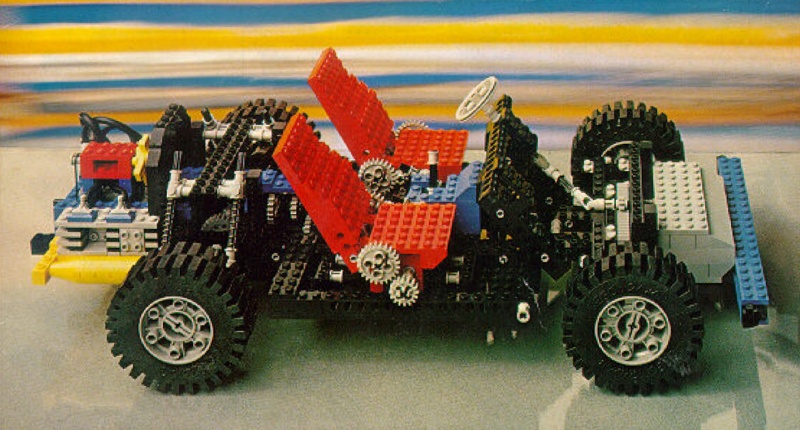
Figure 5 Auto Chassis
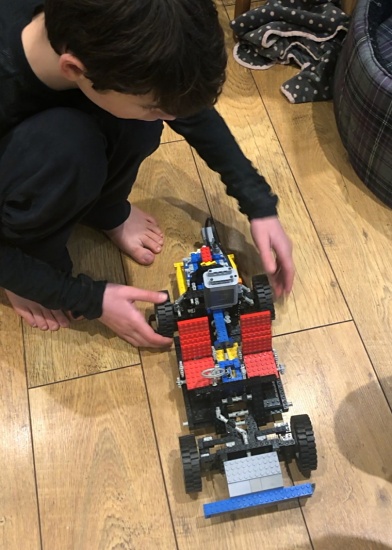
Figure 6 Luka with his Auto Chassis model
Much like Mechanics Made Easy, the Expert Builder name was later replaced by a catchier one, Lego Technic, and the sets started to increase in complexity, thus undermining their central strength: simplicity. In 2000, Lego moved away from parts that were essentially traditional Lego bricks with holes to studless components and from then it effectively became plastic Meccano, losing all the benefits of the original system. This marks the start of a shift away from their original younger audience to a more mature audience. This is exemplified by the Bugatti Chiron set of 2018 (figure 7; reference 5). Unlike the early top-of-the-range car sets this cost £320 and, like Meccano’s № 10 outfit, was far out of the reach of the average child.
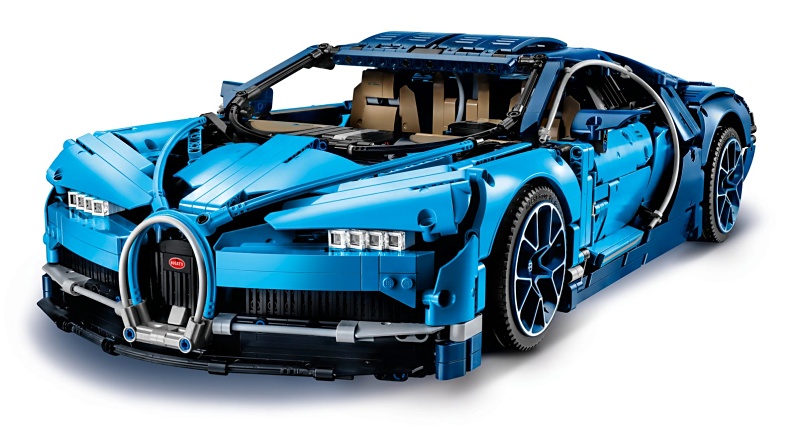
Figure 7 Bugatti Chiron
Early Technic is in many ways more similar to Meccano than the modern sets, as the fundamental idea is to provide the user with parts that can be combined to make mechanical structures that replicate real life. In Meccano one creates parts of the mechanism, then builds a structure that brings them together, whereas in Lego the structure and mechanism are built simultaneously. This, combined with the building block style layering of Lego bricks, can be very intuitive as the builder only needs to focus on one layer at a time since parts effectively only occupy two dimensions. However studs are not very strong and neither are plastics, which means on larger models bracing is sometimes required. This, combined with Lego being harder to dismantle, means that big models are much more complicated and time consuming to make as it takes a long time to change something. Modern Technic is even worse as there are no studs, so one can’t use layering and has to visualise how the whole model will fit together. Dismantling is so much more time consuming and the mechanisms don’t actually reflect real life. This actually means that unlike their Meccano counterparts Lego builders can’t make models better than the sets (a ‘perfect’ model requires a team of people working full-time for years and often involves certain parts being made in colours they had not been made in before). Thus, modern Technic revolves more around producing a model on a box rather than instructing the user on the skills required to produce mechanisms. As such, modern Technic is more similar to Airfix than to Meccano or early Technic.
Ultimately, old Technic should be seen almost as ‘junior Meccano’. This is exemplified by my first experience of mechanical engineering, which came from modern Technic. However I found that building structures with it was so unintuitive that it failed to be educational or satisfying. This led me to my father’s old Technic sets which appealed to me because of their simplicity and versatility, striking a balance between planning and structural integrity. Because I could focus more on the mechanisms I learnt more. However, I eventually reached the limits of the system, and that was when I discovered Meccano. Still, Technic gave me the basic skills required to understand the principles of Meccano. I believe that without first using old Technic, Meccano would’ve been overwhelming for me. Thus, I would encourage you to introduce young potential Meccano enthusiasts to vintage Lego Technic as a gateway to the wonderful world of Meccano.
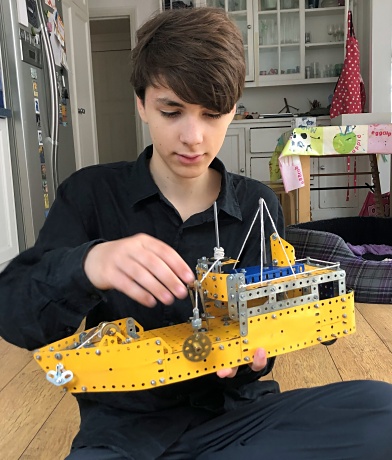
Figure 8 Luka with a Meccano model of a boat
References
- 1977 Lego Technic Catalogue (French and Dutch). Worldbricks, worldbricks. com/en/catalog-year/1970/catalogs-1977. raw? task=download&fid=2831. Accessed 12 October 2022.
- 850 Fortlift Truck Instructions. Worldbricks, worldbricks. com/en/instructions-number/0000/800–899. raw? task=download&fid=269. Accessed 12 October 2022.
- 854 Go Kart Instructions. Worldbricks, worldbricks. com/en/instructions-number/0000/800–899. raw? task=download&fid=273. Accessed 12 October 2022.
- 8860 Auto Chassis Instructions. Worldbricks, worldbricks. com/en/lego-instructions-year/1980/1980. raw? task=download&fid=2679. Accessed 12 October 2022.
- Bugatti Chiron 42083. Lego. www.lego.com/en-gb/product/bugatti-chiron-42083. Accessed 12 October 2022.